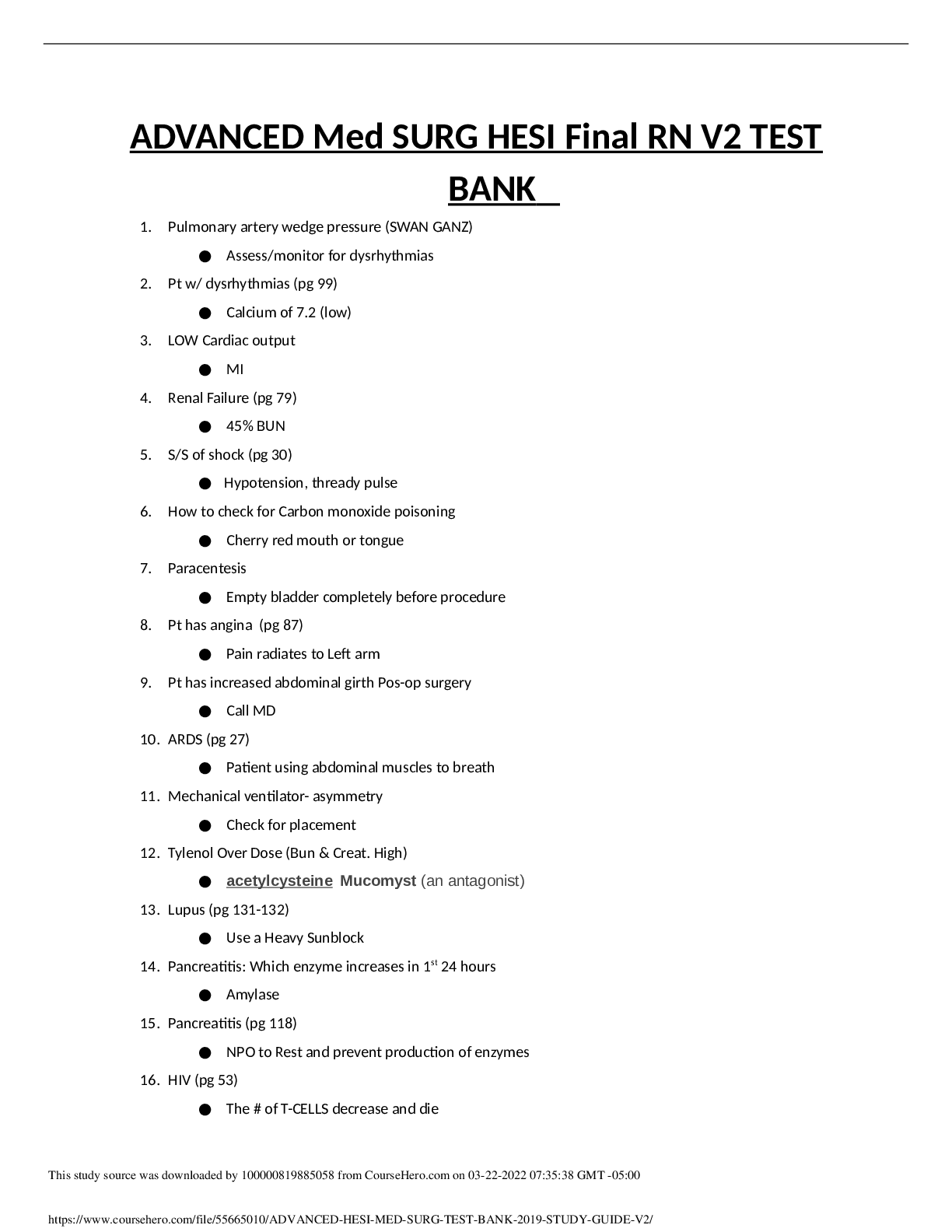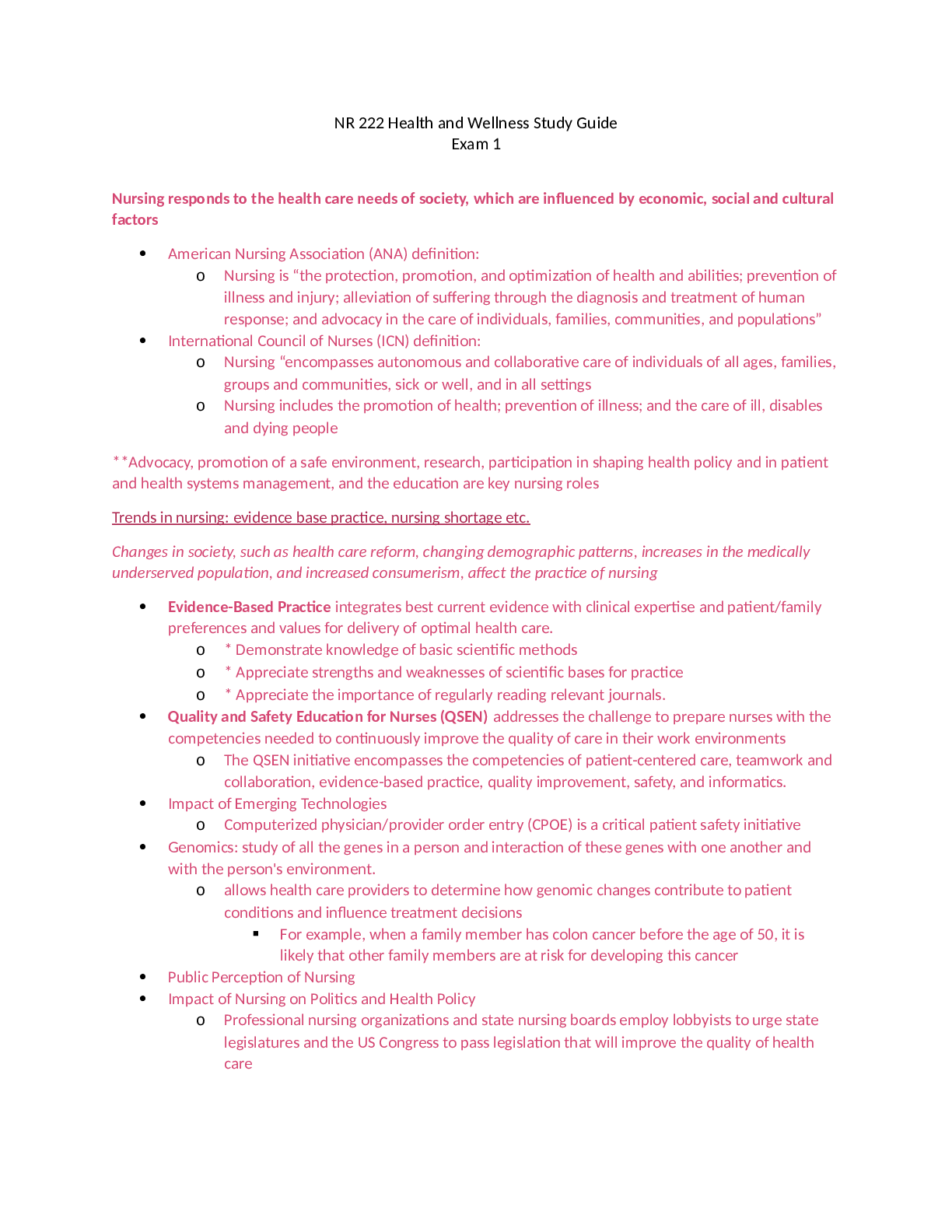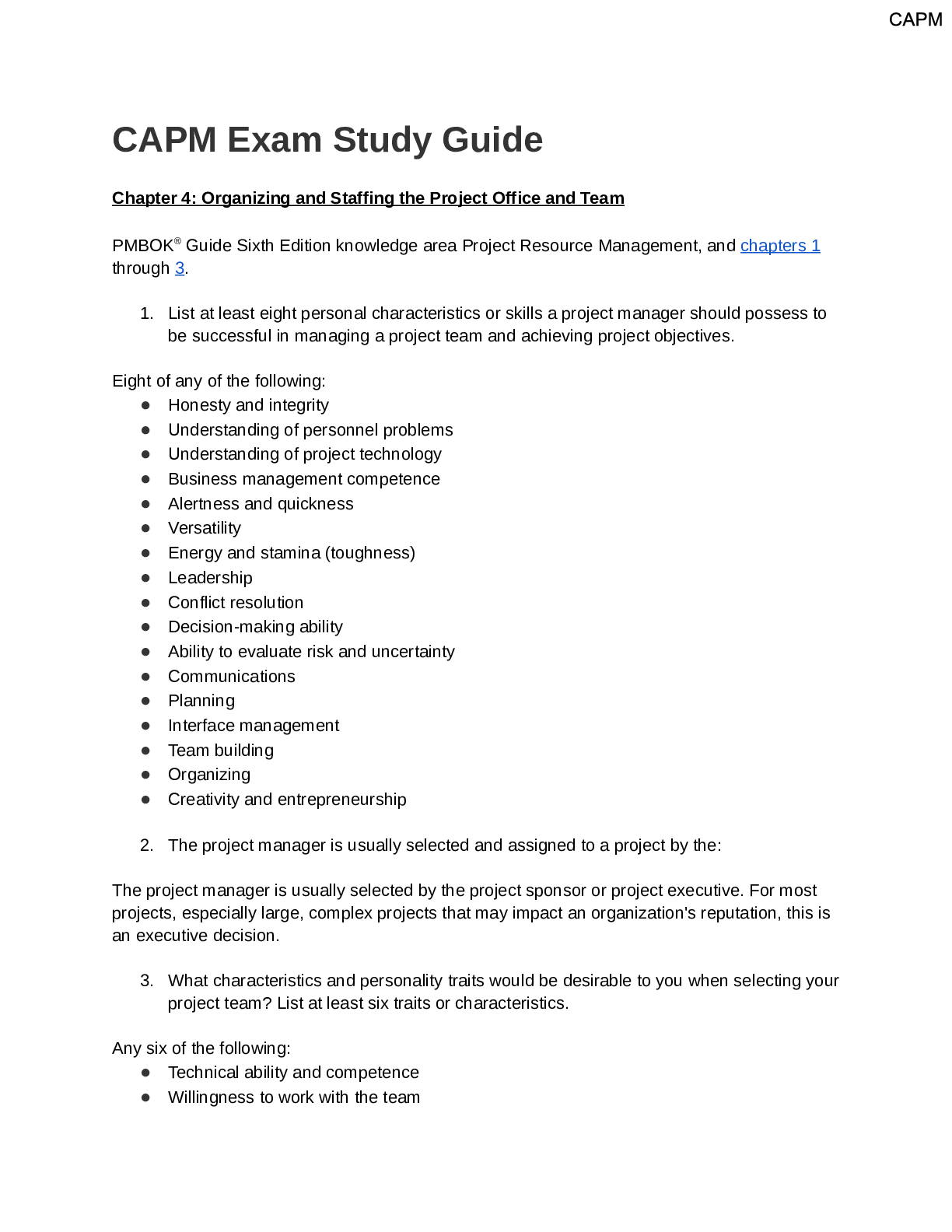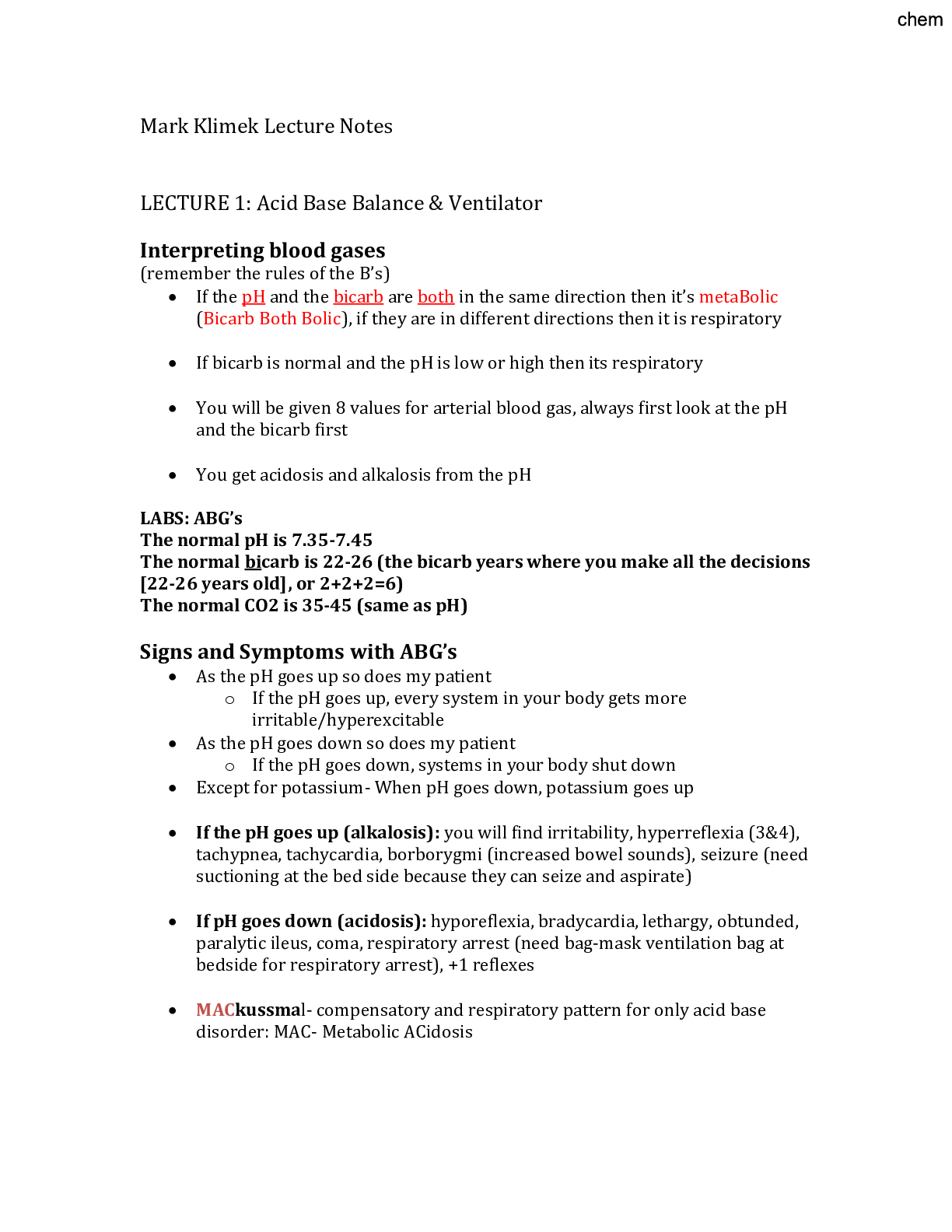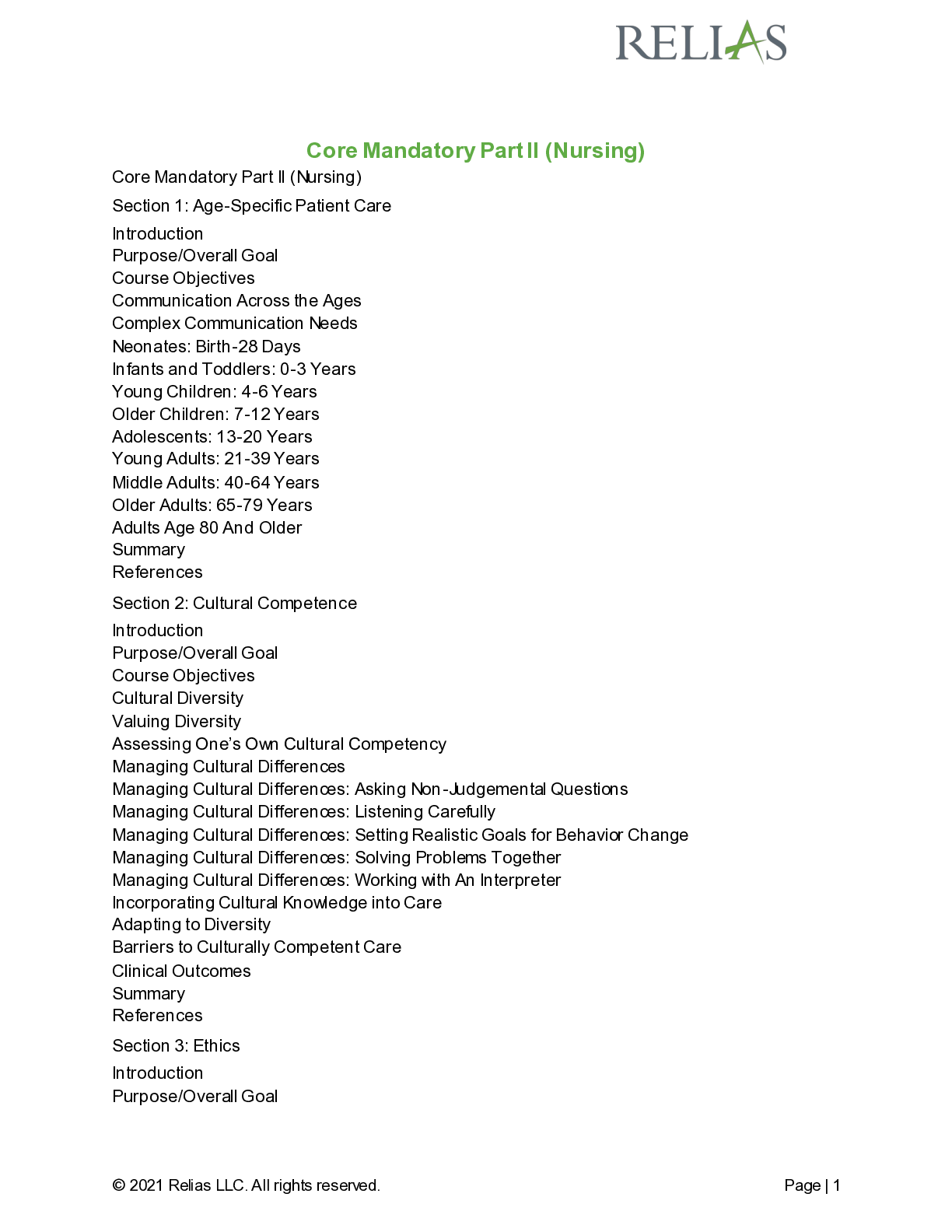English > STUDY GUIDE > Teaching Things Fall Apart in Wisconsin: A Resource Guide for Educators (All)
Teaching Things Fall Apart in Wisconsin: A Resource Guide for Educators
Document Content and Description Below
Contents Introduction and Overview: A thematic approach How to Use this Guide Close Reading Strategies Lesson Plans Include: Objectives, Suggestions for Lectures, Discussion Questions, Activiti... es and Project Ideas Unit 1: Background and Contexts – When Fiction Meets History Unit 2: Social Issues and Religion 2A. Igbo Culture and Its Role in the Novel 2B. Religion and Society: “The Second Coming” 2C. Social norms, caste, and civic structures Unit 3: Gender Unit 4: Psychology and Character Studies Unit 5: Power, Knowledge, Education and Religion Unit 6: Destiny and the role of chi in the novel Unit7: Literary Aspects of the Novel: Form and Structure, Language and Style Unit 8: Colonial Impacts Unit 9: Things Fall Apart as tragedy Project Ideas for the Spring Student Conference Resources Online Resources and Study Guides Books Videos Maps of Africa and Nigeria + selected handouts and student materials (Additional handouts and readings available online) Note: All of the materials found in this guide are also available online at: http://www.humanities.wisc.edu/programs/great‐texts/things‐fall‐apart/curriculum‐guides.html Introduction and Overview A thematic approach to close reading First published in 1958, Chinua Achebe’s Things Fall Apart is easily the most recognizable and widely taught African novel in the U.S. It has been translated into at least 50 languages, and sold over 10 million copies worldwide, and has appeared on many “greatest books of all times” lists around the world. But why? What is it about this classic story of transformation and tragedy that makes this book so attractive to students and educators? In some ways, the book has come to represent Africa as a continent: it serves as a symbol of the injustices of colonization and the internal forces that helped lead to the complete take‐over of Nigeria by the British colonialists. But is has also become a symbol of postcolonial possibility, and the important task the African writer takes up when attempting to reclaim or rewrite the stories of his or her people. Because of this, educators have a double burden in teaching this highly teachable book: they must both fully contextualize the novel in its own time and place, and they must keep central to their approach to the text a constant reminder that while we can learn much about the truths of the colonial experience through this text, it is a work of fiction, not a historical or anthropological tool for understanding contemporary Africa in all its complexity and diversity. To do this, we suggest that the book be taught from a thematic framework which relies on the close reading of key passages, emphasizing the relationship between the form and content of the novel and helping students navigate the development of key characters and themes to negotiate how they create meaning in a Wisconsin classroom. When taught from this perspective, the book opens up worlds of opportunities for students to connect to the text, appreciate its great literary merit, and gain a greater understanding of the themes and issues developed in its pages. How to Use this Guide The lesson plans and activities provided in this guide are designed to allow you the opportunity to tailor the way you teach the novel to your own course, interests, and goals. The individual units could be taught over one or several days, and you can mix and match ideas from the various sections to put together your own syllabus. Each section includes project ideas, study/discussion questions, and suggestions for further teaching of the theme or issue covered, as well as recommendations for material and concepts to be covered in lecture. Discussion questions can be used as prompts for in‐class discussion, or for small group activities or in‐class writing assignments. Logistics for teaching the lessons in this guide The lesson plans included in this guide have been sorted into nine units that can be taught in any sequence, but all of them except the first two generally assume that students have completed the entire novel. This guide is designed to accommodate curricula plans that devote anywhere from two weeks to an entire semester to the novel, and there are basically two ways you could approach the novel: Option A: Thematic model (read the entire text, then discuss) To ensure that students have time to read the novel, the first two units cover background and provide historical and cultural context for the novel, and if you don’t have time to assign the reading earlier, you could use this time (one to two weeks) to assign the reading of the entire text, and then use the rest of the lesson plans to focus on specific passages of your choosing. The lesson plans included in this guide are designed for teachers using this model, but can easily be adapted for Option B. Option B: Chronological/linear model (discuss chapter by chapter, or in three parts) You could customize these units by teaching the book by following the novel chronologically, and picking out themes covered in the lesson plans to focus on in each chapter or section. Since most of the themes addressed in Part One are further developed in Part Two, you could return to these themes as the students finish the reading. This plan lends itself well to a 3‐ or 4‐week model: Part One of the novel – Chapters 1‐13 (p. 3‐125) could easily be read in one week (two if you have time), and Part Two – Chapters 14‐19 (p. 129‐167) – could be read in week two, and Part Three – Chapters 20‐25 (p. 171‐209 ) could be discussed in week three. Even with as few as two weeks to teach the novel, you could cover Part One in week one and Parts Two and Three in the second week. Suggested Preparatory Readings and student materials (handouts) are all available online at: http://www.humanities.wisc.edu/programs/great‐texts/things‐fall‐ apart/center‐resources.html. While these readings are optional (with the exception of the readings recommended in Unit One), they have been carefully selected to provide background, context and content analysis for each specific unit and teachers should find them enormously helpful in preparing to teach the book. Homework, Projects and Student Materials (available online) Each unit is accompanied with supplementary materials, study questions and project ideas which can be used to develop handouts and classroom aids. After surveying the wealth of information available online for this text [Show More]
Last updated: 2 years ago
Preview 1 out of 68 pages
.png)
Buy this document to get the full access instantly
Instant Download Access after purchase
Buy NowInstant download
We Accept:

Reviews( 0 )
$11.50
Can't find what you want? Try our AI powered Search
Document information
Connected school, study & course
About the document
Uploaded On
Sep 08, 2021
Number of pages
68
Written in
Additional information
This document has been written for:
Uploaded
Sep 08, 2021
Downloads
0
Views
56

